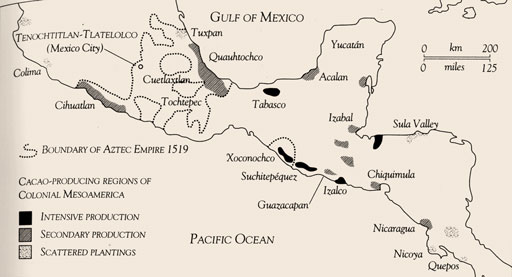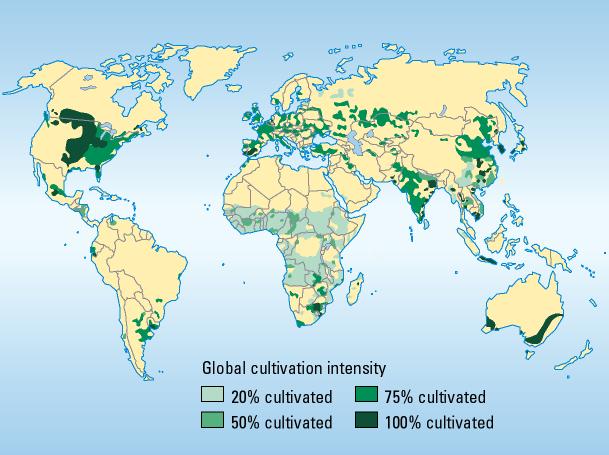![]()
cultural hearth
![]()
A cultural hearth is any place where certain related changes in land-use appeared due to human domestication of plants and animals. The term includes the predominant forms of labor used due to adoption of new tools, or surplus wealth accumulated due to natural, social or organizational advantages stemming from the taming of certain seeds, herd, or other animals.
This Prentice-Hall map of the five primary and twin secondary sites of plant & animal domestication reveals possible dispersal routes.
They are from west to east:
- Mexico – corn & beans. . .
- Peru – potatoes & squash. . .
- Ethiopia – coffee beans & cotton . . .
- Indo-Pakistan – lentils & onions . . .
- China – barley & rice . . .
- East India – rice & hemp . . .
- The Levant (Palestine, Israel, Lebanon & the fertile crescent) – wheat & grape wine . . .
As humans migrated over the past 160,000 years eventually they established cultural hearths that were scattered throughout Asia, Africa, Europe and the Americas as centers of trade, commerce, or invention. The fertile crescent between the Tigris and Euphrates Rivers, which the Greeks called Mesopotamia is one such ancient cultural hearth with respect to the wheel, writing tablets, astronomy and the epic poem of Gilgamesh that found its way into the Bible as the story of Noah and the great flood.
Map of the primary centers of domestication in the world.
Africa as a cultural hearth or the point of origin of the human species and their ancestors.
The places of origin and their identifiable domesticated plants and animals.
People on the move.
Human migratory patterns in prehistory from 170,000 to 7,000 years ago with circled cultural hearths based on gene mapping.
Asia | America | North America
![]()
Cult is the root word of cultivate and culture;

Original cacao production areas in Central America

Arable land in the world and the intensity of its use for production of food, fiber, fuel, or forage.
| Related pages: | ||
| Chronology | ||
| map of the earths regions | The Caucasus, India, and China all gave rise to crops. | |
Alfred Crosby, Germs, Seeds, and Animals.
Jared Diamond, Guns Germs and Steel.
Steve Olson, Mapping Human History.
![]()
Technology index ![]() landscape index
landscape index ![]() words index
words index ![]() map index
map index ![]() photograph index
photograph index
![]()